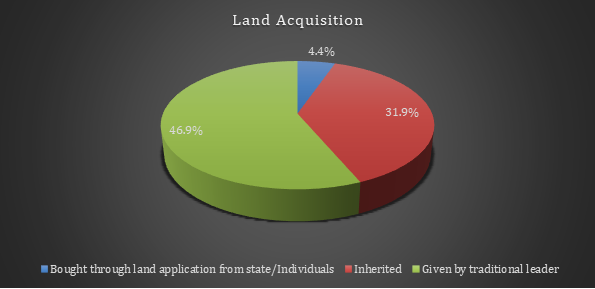The Power of Data: Women’s Land and Home

HLRN and partners have completed the “Assessing Impacts of Women’s Dispossession from Land and Home” project, which gathered survey data to demonstrate the values at stake. This phase of the project was carried out in collaboration with HIC Members Zimbabwe People’s Land Rights Movement (ZPLRM), Civic Forum on Housing and Habitat Zambia (CFHHZ), Shelter and Settlements Alternative: Uganda Human Settlements Network (SSA: UHSNET), Mazingira Institute (Kenya) and Pamoja Trust (Kenya).
Since 2019, the project has pursued the objective of enabling local communities and civil society partners to effectively advocate the realization of human rights, particularly the human right to adequate housing and land, and seek full remedy consistent with the reparation framework in international law. This phase has focused on the continuation of training, research, and advocacy grounded in ample evidence of the impacts of human rights violations on women in Kenya and Uganda, and the extension of similar training, research, and advocacy in Zambia and Zimbabwe. HLRN recognizes that these violations take place within the context of new challenges and opportunities posed by the current global agendas, and, through this project, seeks to provide a model of alignment between these multiple policy frameworks and states’ human rights obligations.
During this phase, HLRN provided training in women’s land and housing rights and in application of the Violation Impact Assessment Tool (VIAT) to partners in Zimbabwe (ZPLRM) and Zambia (CFHHZ) as well as their partners in local civil society, and in central and local spheres of government. Workshops were customized to the local communities’ particular circumstances and needs, as well as additional ongoing support with research methods and analysis of the cases.
During the normative workshops, ZPLRM and CFHHZ identified local experts and knowledge keepers who provided information on national laws and customary norms. In each case, participants produced a national typology of about 20 priority cases in each country, identifying the context, type of violation, current stage of the violation (i.e., before, during and/or after), women’s values at stake and the preferred strategy and remedy for each proposed intervention.
The technical workshops then provided training on how to adapt the quantification VIAT method to capture women’s values at stake in the main case agreed upon. The output of the technical workshops was a customized survey instrument to be taken to the field and applied, using a genderized adaptation of HLRN’s VIAT.
ZPLRM and CFHHZ each used this training program to complete an in-depth assessment of the most-pressing case of rights violation identified during the workshops, documented in two comprehensive reports. SSA: UHSNET built on previous trainings and research, held and conducted during phase one of the project, to assess two addtional cases of violation. During this phase, Mazingira Institute also conducted a follow-on study of women’s experiences in the context of customary practices, which found that commonly women’s loss of wealth, wellbeing and habitat is attributed to the fact that they are women and, thus, their abuse and impoverishment were seen by the general public—and even by some of the victims—as ‘normal.’ That finding influenced the continuation of the project across the other project countries.
Each of the partners has produced detailed reports of their field research and findings, with recommendations for advocacy and needed policy reform. Thew final reports for each of the new cases studied in Zambia, Zimbabwe, and Uganda can be found here:
All materials produced specifically for the project can be found on the Women’s Dispossession from Land and Home project page, created by HLRN as a repository of learning from the project. The outputs also include a repertoire of research tools and training materials, literature reviews, dossiers of relevant legal and analytical references, typologies of recent and potential violation cases, customized survey tools and the final research studies for each case.
Image: Pie chart depicting a data set on land acquisition from the survey reported in the Ndola Rural Research Study. Source: CFHHZ and HIC-HLRN.
|